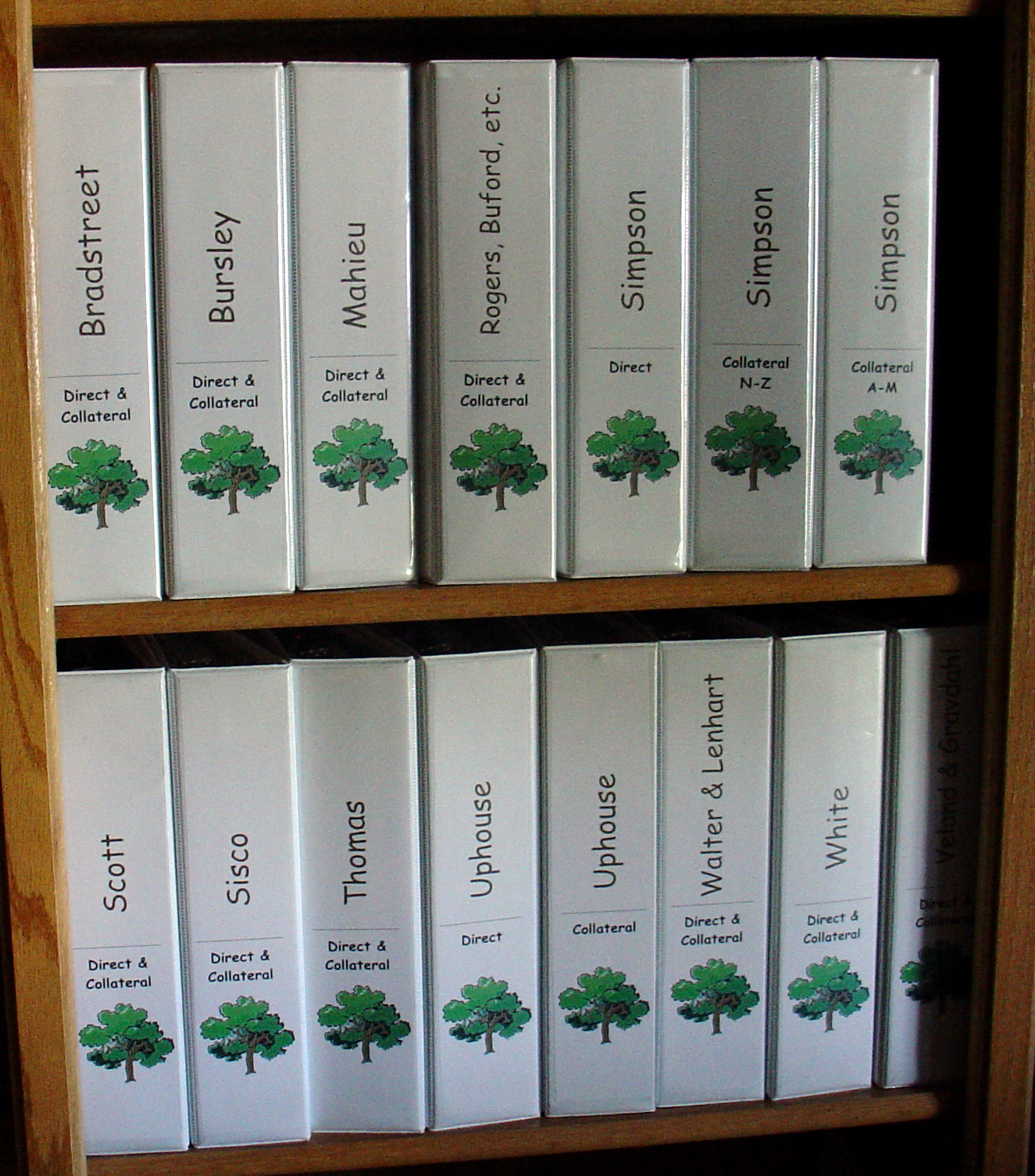
I really enjoy finding stuff.
I really hate filing stuff. (I believe I’ve mentioned that a time or two…or ten…in previous posts, lol.) Hence, I’d made (the unfortunate) decision to go digital in my filing system a couple of years ago. Of course, I kept all of the documents I had currently, as well as any new paper documents obtained from the courthouses or other places. I dutifully scanned those documents, and numbered them using reference number by document type. For example, all death certificates were numbered, beginning with the first certificate, which was DEATH 001, and the next DEATH 002, and so on. The paper copies were kept in a binder of death certificates, and the electronic copies were kept similarly. It seemed to make sense at the time. I stopped printing things I’d found online, and only saved those items electronically.
This left quite a few problems, but it took a couple of years for them to surface. It really became apparent when I returned from Salt Lake City last month. While I want my life to be electronic, there is still a ton of paper involved in genealogy. When I go on a research trip, rarely am I only researching on surname. Often I’m researching several related families, and can amass a ton of paper in a week-long trip. It can take months to analyze, complete the data entry and file these documents. If it’s a family I’m not actively researching, it can take even longer. What to do with all those notes and documents found? Typically they stayed in a file folder in my drawer. Or maybe they sat in a file on my desk. Or, maybe just in my filing basket. You get the picture.
The larger issue I found with my system was that the having the paper documents available by family to review is more effective than simply reviewing the electronic documents in my genealogy program. More importantly, if something happens to me, organized binders would be far easier for someone to see what research I’d completed and continue on.
So….I began a quest for a filing system, and borrowed a bit here and a bit there, but my system most closely mimics Dear Myrtle’s, which she describes in her January 2009 checklist. It took me a good couple of weeks to (mostly) complete, but here’s what I decided on:
- 3-ring binders with extra-wide dividers
- All supporting documentation is placed in page protectors, filed behind each Family Group Sheet
- All direct ancestors as well as collateral lines are included in the notebooks
- Some binders contain only one surname, while some contain several related surnames, if I’ve not yet done much research and wish to file with related families.
- Some surnames require three to four binders to hold the documentation. For my Stanwood family, for example, I have one binder for direct ancestors, and two binders for collateral families (A-M and N-Z).
I have a couple dozen binders now, but the best part is each has a “To Do” folder for any documents found or research completed that’s not yet been analyzed and entered into Roots Magic. Now, when I come home from a trip, I only need to file the related documents in that To Do folder, and when I work on that line, I have the current as well as “to be completed” stuff at my finger tips. It was quite an investment to switch to this filing system – binders, page protectors, dividers, and a new printer. It was an even bigger investment of time – printing off documents for which I only had electronic versions, and sorting all of my carefully numbered documents (DEATH 001, DEATH 002, etc.) by family. However, it was quite worth it. Just the process of filing these items revealed holes in my research.
Guess the moral of the story is don’t throw the baby, or the paper, out with the bathwater. At least for now, paper is here to stay.


0 responses to “Don’t throw the baby (or the paper) out with the bath water….”
Loved it. I do many of these already but found some great new tidbits. I would add my love of lists. Lists of all ancestors from England organized alphabetically by surname and another alphabetically by County. Lists of ancestors from Germany; again organized Alphabetically by surname, but also from place, year of arrival etc. These consolidated lists have been a life saver. Especially when you can’t remember or haul everything along.
Thanks, Kelly. Lists are wonderful. My favorite, though, is done in an Excel spreadsheet. It’s helped me solve a couple of mysteries by being able to sift and sort in a variety of ways.